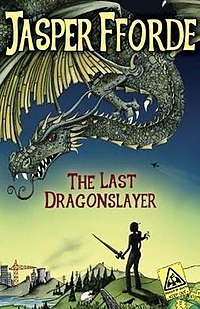 Told from alternative viewpoints, Sharon Flake’s new novel explores the
relationship between high school students Adonis and Autumn. Due to a
birth defect, Adonis was born without legs and is wheelchair-bound. He
compensates for his physical disabilities by striving for academic
perfection; he is much more interested in receiving praise and
admiration from his teachers than forming relationships with his peers.
On the other end of the spectrum is Autumn, a weak student with an
enormous personality. Autumn is a star on the boy’s wrestling team, but
she struggles mightily in the classroom with both reading and
mathematics. She says she is attracted to smart guys, and Autumn has
her sights on Adonis. She is convinced with enough effort, her
effervescent personality and her deep devotion will win Adonis over.
She has a big uphill battle though, because Adonis wants nothing to do
with a girl who can barely read. He rejects her harshly throughout the
novel, but Autumn keeps coming back for more.
Told from alternative viewpoints, Sharon Flake’s new novel explores the
relationship between high school students Adonis and Autumn. Due to a
birth defect, Adonis was born without legs and is wheelchair-bound. He
compensates for his physical disabilities by striving for academic
perfection; he is much more interested in receiving praise and
admiration from his teachers than forming relationships with his peers.
On the other end of the spectrum is Autumn, a weak student with an
enormous personality. Autumn is a star on the boy’s wrestling team, but
she struggles mightily in the classroom with both reading and
mathematics. She says she is attracted to smart guys, and Autumn has
her sights on Adonis. She is convinced with enough effort, her
effervescent personality and her deep devotion will win Adonis over.
She has a big uphill battle though, because Adonis wants nothing to do
with a girl who can barely read. He rejects her harshly throughout the
novel, but Autumn keeps coming back for more. Pinned does an excellent job of showing the powerful role family background plays in shaping a child’s opportunities and values. Adonis’s mother is an educated woman who has taught her son the importance of doing well at school. Her efforts to prove to her son that he can accomplish anything have resulted though in Adonis’s cocky over-confidence. Autumn’s parents are both high school dropouts who also struggle with reading. Only recently have they come to terms with their daughter’s academic troubles. Not wanting her to follow the same path they feel they were forced down, they try to practice reading together as a family. Unfortunately, the damage is already done and Autumn despises reading so much that she is very reluctant to try to improve.
Though her novel has some strengths, Flake’s message about relationships is deeply disturbing. Pinned shows young readers if you pursue something hard and long enough, eventually you will get what you want, even in relationships. Autumn stalks Adonis throughout the novel. She sends him endless text messages, follows him through the halls, sits in his lap, and kisses him without his consent. The reader is supposed to believe that this is okay because deep, deep down (so deep he doesn’t consciously know it) Adonis wants Autumn’s affection. Imagine if the genders were reversed in this novel. A strong, muscular boy on the wrestling team relentlessly pursing and forcing himself upon a crippled girl? Autumn’s friends and family would be seeking a restraining order. Autumn’s acceptance of Adonis’s behavior towards her is also unsettling. She is seen as a pure, loyal character because she accepts his constant rebukes. Adonis belittles and insults Autumn at every turn, but that has little effect on her feelings towards him. Though Adonis and Autumn change the way they feel towards each other, they do not apologize for their behavior.
I loved Flake’s novel The Skin I’m In and I had high hopes for Pinned. Though I liked the way Flake portrayed the academic issues that many students, particularly African American students, face, her depiction of adolescent romance left me feeling deeply disappointed.
1 out of 5 stars
Grades 7 and up









